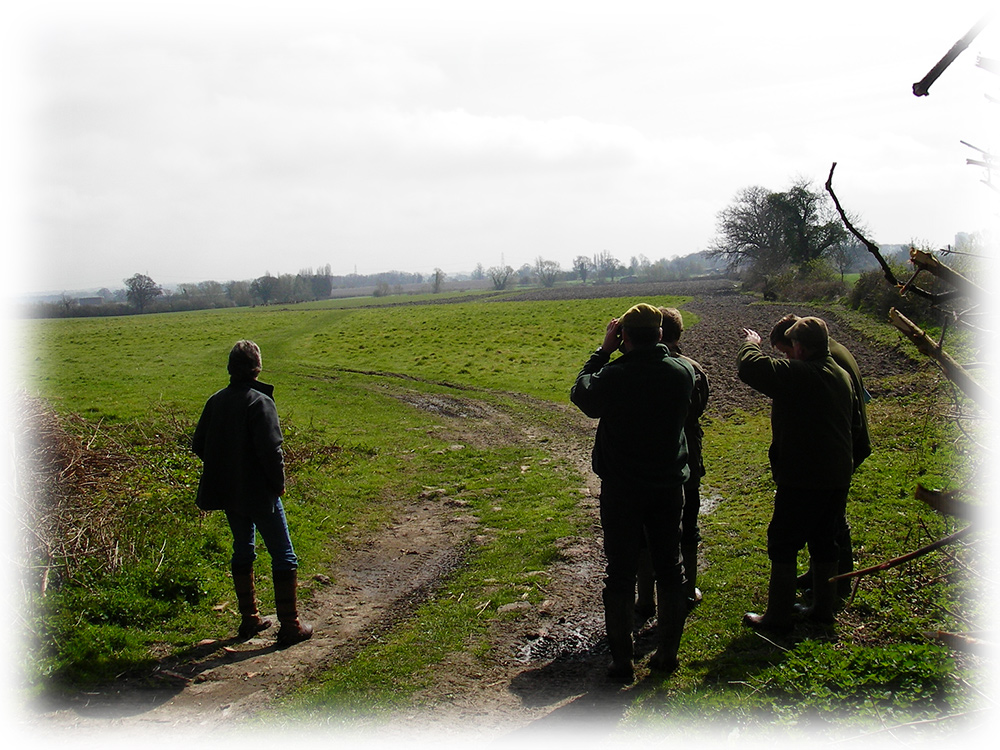
Cross-boundary liaison
Introduction
There are times when working together across boundaries is the best way to achieve common deer management objectives. This guide describes how cross boundary liaison can be achieved and the situations in which it might be appropriate. This guide links to Cull Planning, Team Culling and Moving deer guides.
There are a number of reasons why liaison is useful:
- To gain information on population numbers or the deer range – Information on the minimum numbers, distribution and impacts of a widespread population is more meaningful if figures from the relevant holdings can be pooled to gain a “bigger picture”.
- To share other information related to deer – Liaising with regard to deer can have useful spin-offs such as cooperative venison marketing, sharing best practice and information on poaching and rural crime.
- To determine, manage and achieve culls on a landscape scale – Herding species such as fallow may utilise very large areas, crossing ownership boundaries all the time. Culling in one area may push deer onto neighbouring properties. Collaboration is essential to achieve sustainable control of deer numbers and population structure across the population range.
- To enable local culling across local boundaries – Neighbours might agree that deer common to both properties are culled according to an agreed plan. This might apply to the territorial as well as herding deer species.
- To achieve culls by pooling resources – In areas where there is insufficient stalker or infrastructure resource to complete a maintenance cull, or where a population needs to be reduced quickly e.g. reducing a population to prevent excessive impacts to an important conservation site.
Organisational structures
There are various ways in which liaison can be coordinated, ranging from landscape scale formal Deer Management Groups (DMGs)1 through smaller locally focussed DMGs to ad hoc arrangements between neighbours.
The degree of formality of any of these arrangements is dependent only on the requirements of the stakeholders, the key measure of success is whether cull targets and management objectives are achieved, rather than the number of meetings that are held.
Simply setting aside time to talk with neighbours specifically on the subject of deer, can often lead to effective ways of working with each other.
Types of local liaison
There are a number of ways in which liaison can make the local culling effort more effective, examples are:
- Agreeing to shoot on either side of a boundary at the same time. Often culling in one area pushes deer onto neighbouring properties. If stalking outings are coordinated, for instance arranging for one group of stalkers to be operating at the same time as the neighbouring group, deer moving from one area to another will find it more difficult to escape being culled.
- Agreeing access via a neighbour’s property. It may be difficult to approach stalking areas in certain weather conditions or because of lack of cover. Having the flexibility to access an area across a neighbours land can make the approach easier.
- Agreeing protocols for following up injured animals. If there are pre-arranged access agreements for dealing with deer injured in road accidents or with wounded deer humane dispatch can be carried out speedily without recourse to seeking permission for access.
- Culling on a neighbour’s property . Where a woodland edge is a boundary, having permission from a neighbour to shoot on the immediately adjacent fields can make obtaining culls easier. Ownership of carcasses must be agreed in such arrangements.
- Team culling. One way of achieving cull targets is to use known and trusted additional stalkers and/or equipment from outside the area. A number of stalkers present in the same area at the same time sit out and/or move deer hoping to cull larger numbers than an individual stalker could alone. This approach will suit certain areas better than others but can be very effective and may cause less disturbance than spreading the effort over a longer period (see Team Culling guide).
Further Info
1 See the Deer Management Groups guide
[printfriendly]